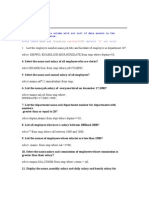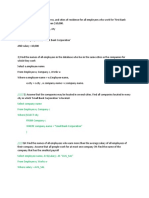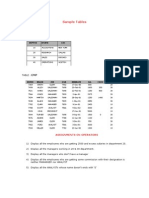0% found this document useful (0 votes)
5 views6 pages405 Cs
The document contains a structured list of SQL questions and answers designed for quick revision or viva preparation. Each question includes a SQL query, an explanation, and a tip to remember key concepts. Topics cover various SQL functions, conditions, and joins relevant to employee data management.
Uploaded by
creativeeditor600Copyright
© © All Rights Reserved
We take content rights seriously. If you suspect this is your content, claim it here.
Available Formats
Download as PDF, TXT or read online on Scribd
0% found this document useful (0 votes)
5 views6 pages405 Cs
The document contains a structured list of SQL questions and answers designed for quick revision or viva preparation. Each question includes a SQL query, an explanation, and a tip to remember key concepts. Topics cover various SQL functions, conditions, and joins relevant to employee data management.
Uploaded by
creativeeditor600Copyright
© © All Rights Reserved
We take content rights seriously. If you suspect this is your content, claim it here.
Available Formats
Download as PDF, TXT or read online on Scribd
/ 6



















































































